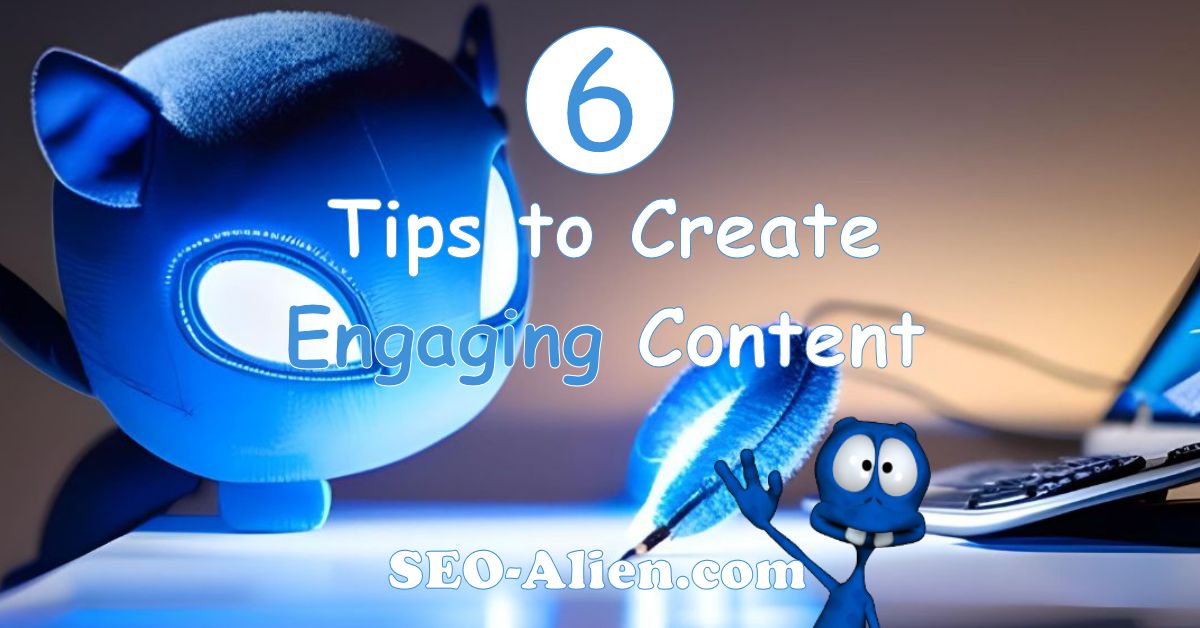Content has always been king, but in today's digital age it is more important than ever.
With so much information available at our fingertips, people are more selective about what they consume. They want content that is engaging, informative, and relevant to their interests.
And to start, I will start here: The teacher always learns the most.

And as a content creator, I have learned from personal experience that the best way to create engaging content is to teach. When I am writing a blog post or creating a video, I always try to think about what I would want to learn if I were in my audience's shoes. I also try to make my content as interactive as possible, so that people can engage with it in a meaningful way.
When writing your articles, take your time and don't cut corners. Ask yourself this question as you prepare your content: "How many articles would I need on page 2 of Google to get the same amount of traffic from being on the 1st page of Google for a competitive search phrase?" If you ask that question enough, or you can visit the website. Otherwise, you will slow down and do it right… and better. Because for a competitive search phrase, you may need dozens or even hundreds of articles on page 2 of Google to get the same amount of traffic as being on the 1st page of Google.
There are a lot of factors to consider in order to get it right, and it is well worth your time to be sure you have. Here are 5 factors you should consider:
- The competitiveness of the search phrase
- The quality of your content
- The authority of your website
- The backlinks to your website
- Your website's marketing efforts
By focusing on improving all of these factors, you can increase your chances of getting more traffic to your website, but in this post we are going to concentrate on the 2nd one, the quality of your content. This will also help with #1,#3,#4 and #5.
So here are the SEO-Alien's 6 tips on how to create engaging content that will drive traffic to your website. After being a content creator myself for over 20 years, I hope you find these tips helpful and practical.
1. Create content that solves problems or answers questions your audience has.
Problem-solving content is a powerful tool for driving traffic and growing your business. When you create content that solves problems for your audience, you're providing them with value and building trust, and your audience is more likely to share it with others helping you to reach a wider audience. Over time, this can lead to more followers, more traffic and more sales.
Problem-solving content will also help your website rank higher on search engines. When you create content that is relevant to your target audience and solves a problem they are facing, you are more likely to rank higher in search engines. This can lead to more traffic to your website and more opportunities to convert visitors into customers.
2. Chose a topic that you are passionate about.
When writing a blog post to get more traffic to your website, I recommend choosing a topic that you are passionate about. Your passion will show in your writing, which will make your blog post more engaging and interesting to read. As a result, you will be more likely to attract and retain readers.
Here are some other benefits of writing you will likely gain when you write about a topic that you are passionate about:
- You will be more likely to produce high-quality content.
- You will be more likely to stay motivated.
- You will be more likely to build an audience.
- You will be more likely to enjoy the process.
3. Do your research.
If I have learned anything about writing quality content, it's important to do your research. This means taking the time to learn about your topic and gather information from credible sources. By doing your research, you'll be able to write with authority and confidence, and your content will be more informative and engaging. Yes, it takes time to do it correctly.
Here are some tips I suggest you follow when doing your research:
- Do your homework. Once you've chosen a topic in Step 2 above, take some time to research it. This means reading articles, books, and other materials on your topic. You can also talk to experts and conduct interviews.
- Gather credible sources. When you're doing your research, be sure to gather credible sources. This means using sources that are reliable and accurate. You can find credible sources by looking for sources from government agencies, universities, and other reputable organizations.
- Take notes. As you're doing your research, be sure to take notes. This will help you to remember the information you've gathered. You can also use your notes to help you organize your thoughts and ideas.
- Write a rough draft. Once you've done your research, it's time to start writing. Don't worry about making it perfect at this stage. Just get your thoughts down on paper.
- Revise and edit. Once you have a rough draft, it's time to revise and edit it. This means checking for grammar errors, spelling mistakes, and other errors. You should also make sure that your content is well-organized and easy to read.
- Get feedback. Once you've revised and edited your content, it's a good idea to get feedback from others. This will help you to identify any areas that need improvement.
- Be Patient. By not being patient and taking your time, rushing to get your publication out will only hurt you in the long run.
4. Write in a clear and concise style.
Get to the point quickly, and use simple language that is easy to understand. This is because people are busy and have short attention spans. If your writing is difficult to read or understand, people are less likely to stick around and read your entire post.
Here are some tips for writing in a clear and concise style:
- Use simple language. Avoid using jargon or technical terms that your readers may not understand.
- Use short sentences and paragraphs. Forget what you learned in grammar class. by breaking up your paragraphs, it will actually help make your writing easier to read and understand.
- Get to the point quickly. Don't waste your readers' time with unnecessary introductions or background information.
- Use strong verbs and active voice. This will make your writing more engaging and interesting to read.
- Proofread your work carefully before you publish it. This will help you catch any errors in grammar or spelling.
5. Use visuals where you can.
People are more likely to remember information that is presented visually. Visuals can help to:
- Break up your text and make your content more visually appealing. This can make your content more engaging and easier to read.
- Help your readers to understand your content more easily. Visuals can help to illustrate complex concepts and make them easier to understand.
- Increase the shareability of your content. Visual content is more likely to be shared on social media and other platforms.
- Attract more readers to your website. Visual content can help to improve your website's search engine ranking.
Here are some tips for using visuals in your blog posts:
- Only Use high-quality images and videos. Your visuals should be high-quality and relevant to your content.
- Use visuals that are relevant to your target audience. Consider the age, interests, and demographics of your target audience when choosing visuals.
- Use visuals that are consistent with your brand. Your visuals should be consistent with the overall look and feel of your blog.
- Use visuals sparingly. Too many visuals can be overwhelming and distracting.
6. Use AI for writing content, wisely.
I have been experimenting with AI-generated content for a while now. I feel that the quality of my work has improved, but the process has not become any faster. In fact, it has only made me more aware of the importance of research and details. This is likely why the quality has gotten better, as I am now only doing what I should have been doing the whole time.
AI can be a great tool for generating ideas and outlines, but it is still up to the writer to do the hard work of researching and fact-checking. This is especially important for technical or complex topics, where even a small error can be misleading.
Overall, I believe that AI is a valuable tool for content writers, but it is important to use it wisely. Don't rely on AI to do all the work for you. Instead, I recommend that you do use it, but only use it to augment your own skills and knowledge.
Summing it all up
In conclusion, these are just a few of the things I've learned over the past 20 years of writing content. By following these tips, you can create engaging content that will drive traffic to your website.
Remember, the most important thing is to be yourself and write about things that you're passionate about. If you can do that, you'll be well on your way to creating content that people will love.
I hope this blog post has been helpful. If you have any questions, please feel free to leave me a comment below.
About the Author:
The SEO-Alien is a project started in 2009 regarding all things online marketing. The site started out more of a diary of predictions, suggestions and references to things I frequently used for online marketing... before social media marketing was even an option.
I hope you find the information and tools presented here useful and something worth sharing with others.
If there is anything else about online marketing or any online advertising strategy you think would be helpful, please let me know.





